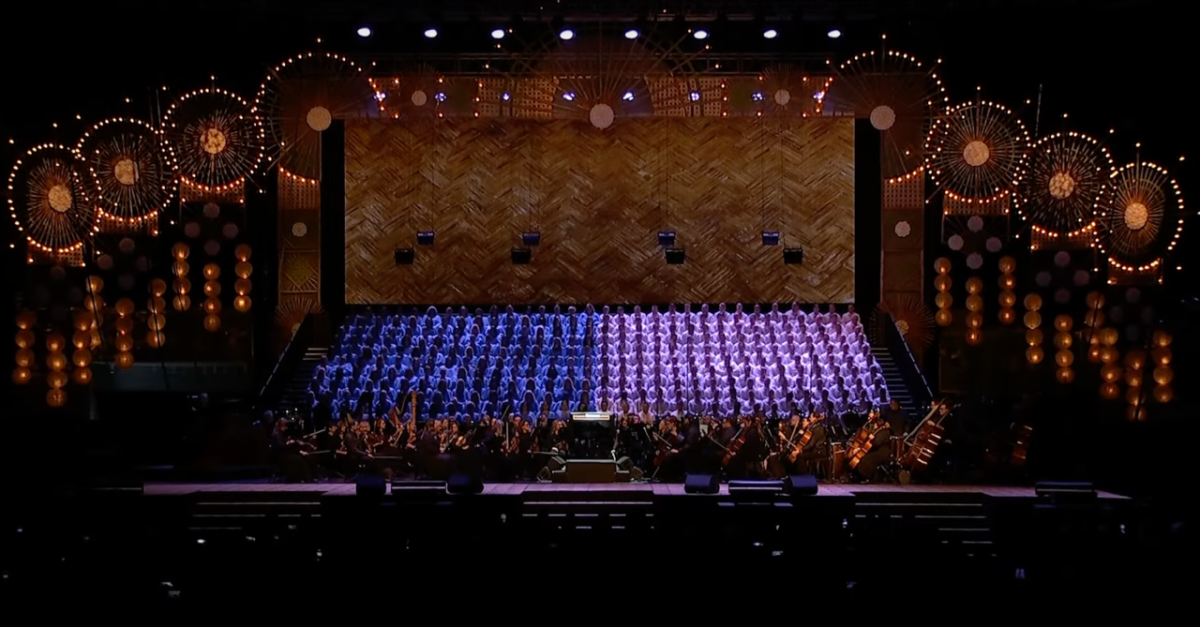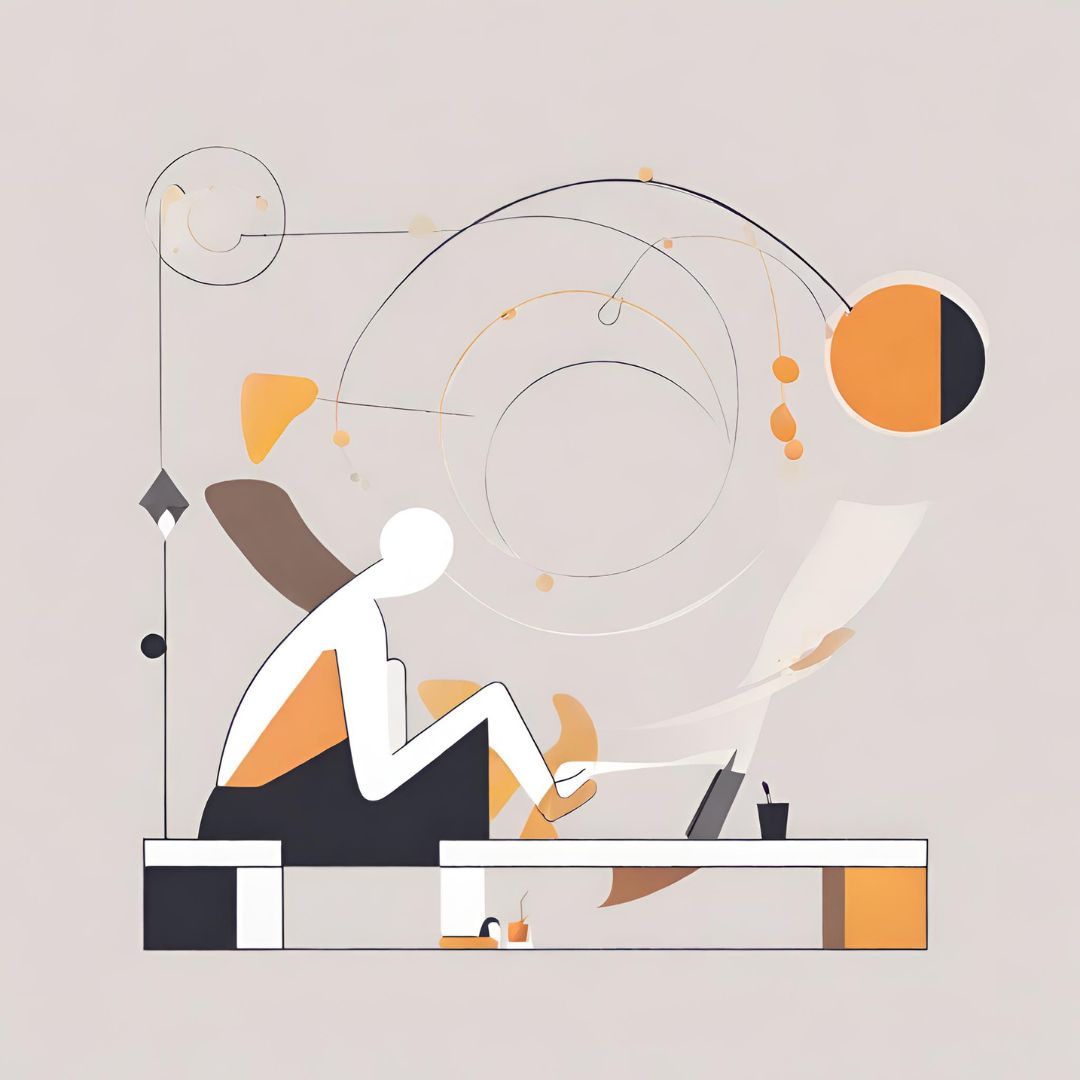Touted to be the dirtiest and most controversial elections in Philippine history at the time, the 1969 Presidential election was held on November 11, when more than 8 million Filipinos trooped the precincts to cast their vote for the next President.
Then incumbent President Ferdinand Marcos was chosen as the standard-bearer of the Nacionalista Party, while Senator Sergio “Serging” Osmeña Jr. was the official candidate of the Liberal Party.
In the campaign trail, Marcos as president had the government resources at his disposal to clinch a re-electoral win, with First Lady Imelda Marcos effectively campaigning for him.
According to Primitivo Mijares, a former Marcos pressman who became a victim of forced disappearance, Marcos overspent public and privately supplied funds for his “win at all costs” reelection campaign. This resulted to inflation in 1970, when the exchange rate dropped from P3.90 to P6.85 per $1.
On the opposition’s side, the oratorical skills of Senators Ninoy Aquino and Jovito Salonga wooed the crowds to vote for Serging.
Amidst all of this, defections, a common electoral affair, took place. If Marcos’s chosen running mate was the uncharismatic and stubborn Fernando Lopez, Genaro Magsaysay was the running mate of Osmeña.
Despite the fact that Magsaysay was a Nacionalista, it was the Liberal Party’s decision to nominate him under the party’s banner, much to the dislike of many Liberals, and therefore causing massive defections.
Meanwhile, street demonstrations went unabated, as price hikes continued. The protesters became more violent if only in response to the deaf ears of the administration and the increasing violence that the police have inflicted on initially peaceful rallyists.
Beginning from the simple unresolved school issues in 1966, snowballing into larger issues such as poverty, US dependence, and graft and corruption by 1969, student activists grew in number from small pockets to thousands in 1970.
From peaceful picketing, the rallyists upped their ante in proportion to the police’s mauling by truncheon. The rallyists learned how to make hand-made molotov cocktails and pillboxes. The police in turn, occasionally gunned the crowd (one University of the East student, Prudencio Tan was shot on the neck in 1966), or mauled captured protesters in the frenzy of the riots.
Second and Limitless Term
There was much talk of Marcos winning his reelection, the first under an independent Philippine Republic. As Congress counted the ballots, it was officially declared, albeit unsurprisingly: Osmeña lost to Marcos by over two million votes. Both Marcos and Lopez came out as victors.

Plans were immediately made for President Marcos’ second inaugural scheduled on December 30, 1969. But Marcos’s mind was clearly set not only on his second term, but beyond it, even when he publicly denied it.
According to Juan Ponce Enrile, who was then Marcos’s Justice Secretary, sometime that month, Marcos ordered him to do a study on the Constitutional powers of the president as commander-in-chief in the event of an escalation of violence and disorder. The instruction was, “The study must be done discreetly and confidentially.”
Enrile wrote that after the inaugural, on New Year’s Day of 1970, he called on Efren Plana of the UP College of Law, who also referred Minerva Gonzaga Reyes, to help him in this feasibility study on Martial Law that Marcos ordered.
A comprehensive research was subsequently conducted by the team, secretly rummaging the books in the Supreme Court, UP College of Law and the Justice Department, searching for that loophole in the 1935 Constitution.
And they found it.
Martial Law can be declared indefinitely since there were no constitutional limits to it.
At around the same time, Marcos called on Executive Secretary Alejandro Melchor and Jose Almonte to research on how martial rule was done in other countries and what its effects were.
Being a sigurista, Marcos wanted to be sure. Almonte presented to Marcos the result of their study, saying “while Martial Law may accelerate development, in the end the Philippines would become a political archipelago, with debilitating, factionalized politics.” It would result in polarization and divisiveness. It was not a pleasant thought.
Of course, all this talk of extending the two-term limit of the president would not be enough. Legally, it would not hold water. However, Marcos saw an opportunity.
Public opinion had been tackling the possibility of updating or amending the Constitution. And amending the Constitution meant holding an election of delegates for a Constitutional Convention, a body tasked by the 1935 Constitution to edit and ratify the amendments.
It would also mean that if the current form of government was changed to parliamentary, he would become Prime Minister, further extending his rule.
One of the would-be elected delegates of the ConCon to be held on November 1970 was Aquilino Pimentel, Jr. (the father of the current Senate President). Pimentel writes:
“In 1970…Marcos called for the Constitutional Convention, to amend the 1935 Constitution, which had governed the nation for the last 35 years. The premise was that we needed a new constitution that would capture the soul and aspirations of the Filipino.
“The argument was that the 1935 Constitution was ‘a colonial document’ because it had provisions allowing the presence of the US military bases in the country and requiring the approval of the US President to make it effective even after the Filipino people ratified it.”
Journalist Pete Lacaba describes the general sentiments of the people at the time:
“When the year [1970] began, the talk was persistent that the newly elected President was already eyeing a third term, and the news leaked out that the major political parties were already re-oiling their machines in preparation for the coming Constitutional Convention elections.
“Tidings of this sort could only heighten the people’s already intense contempt for politicians in power. At the same time, unnoticed by a sensation-hungry press, the campuses were seething more violently than a witches’ cauldron.”
Tumultuous SONA

That was why, when President Marcos delivered his fifth State of the Nation Address (SONA), or rather the first one during his second term, an unprecedented 20,000 to 50,000 students (estimation by Lacaba) flocked P. Burgos Drive, the street fronting the Legislative Building.
Edgar Jopson, an Atenean and president of the moderate National Union of Students in the Philippines (NUSP), was the one who filed the rally permit to the city government of Manila.
Hence, speakers and microphones were set up, as the students voiced their agreement to each speaker on the podium.
NUSP was also joined by the Kabataang Makabayan, Samahang Demokratiko ng Kabataan, Malayang Pagkakaisa ng Kabataang Pilipino, Kilusan ng Kabataang Makati, National Association of Trade Unions, and Malayang Samahang Magsasaka.

Marcos delivered his SONA, which nobody in the crowd even bothered to understand, as to them he was a “MARcos, PUPpet! MARcos, PUPpet!”
Visible in the crowd were three items: a large crocodile made of cardboard to symbolize the “buwayas” of Congress, a large coffin made of cardboard to symbolize the death of democracy, a large effigy of Marcos ready to be burned, and placards with “HITLER” inscribed on the calendars that Marcos gave away during the campaign.

At around 5:30 pm, as Marcos made his way out of the Legislative Building and where on the steps down, Lacaba as witness to the event recounts:
“When [Marcos] came out of building…, to the flash of bulbs and the scamper of security men, unseen hands hurled the cardboard coffin and the cardboard crocodile in his direction, the effigy was set on fire, and down on Burgos Drive arose an insistent chant, denouncing the puppetry of the national leadership. Then all hell broke loose.”

A riot ensued, as the crowd was pushed by the police, hitting the crowd using rattan truncheons, while the protesters retaliated by throwing stones, placards, softdrink bottles and even chairs. Marcos wrote on his diary:
“I could not go into the car as Imelda kept standing on the stairs. Col. Ver tried to push me inside but I ordered the First Lady to be fetched and put inside first. Since she could not be pulled by anyone, I had to do it myself. I am afraid I pushed her into the car floor much too hard. Anyway I bumped my head behind the right ear against the car’s door side and twisted my weak right ankle again. We moved out under a hail of stones. But the PSA agent covering me, Agent Suson, was hit in the forehead and left eye and took four stitches. I thought it was Col. Ver as his barong was splashed with splotches of blood but Suson’s blood had spilled on him as he was on my right.”
Ferdinand and Imelda Marcos had a quick getaway via the presidential limousine, as shouts of the thousands could be heard: “Makibaka! Huwag matakot!”


Lacaba notes:
“Each time they [protesters] attacked, the cops grew more frenzied, maddened and bewildered by the defiance they had not expected and could not understand.”
It was the first violent protest of this scale, which would disturb even Congress, who called for a joint probe on the matter two days after.
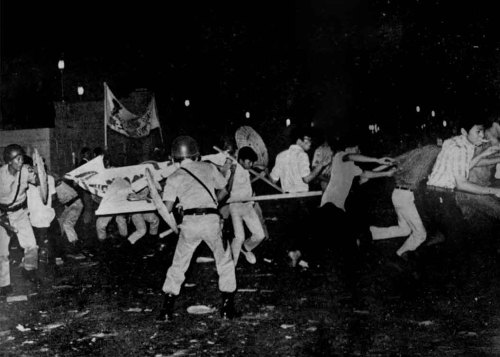
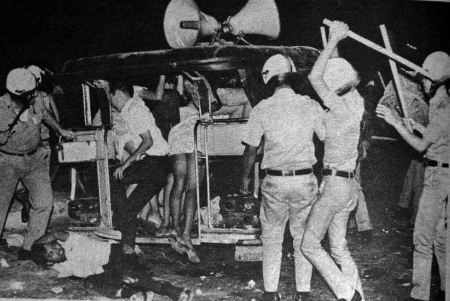
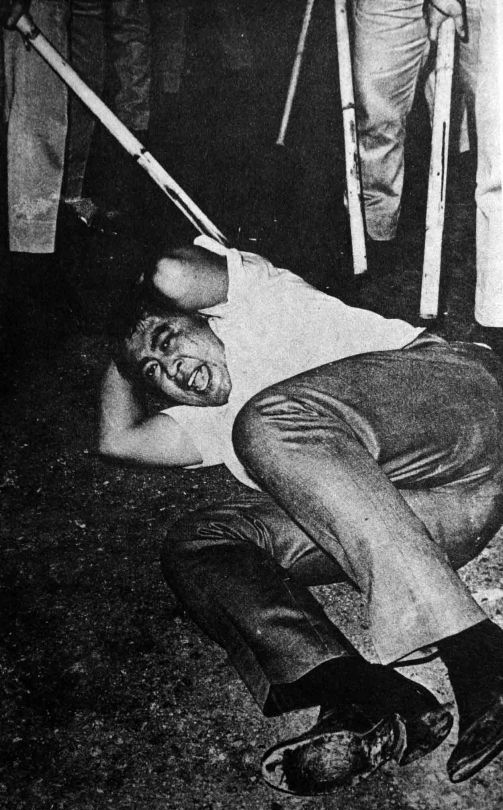
Marcos himself would write on his diary that night:
“After the State of the Nation address, which was perhaps my best so far, and we were going down the front stairs, the bottles, placard handles, stones and other missiles started dropping all around us on the driveway to the tune of a ‘Marcos, Puppet’ chant… Some advisors are quietly recommending sterner measures against the Kabataang Makabayan. We must get the emergency plan polished up.”
Notice how Marcos praised himself—according to him this SONA was his “best so far.” Unknown to Marcos, he had just triggered the First Quarter Storm, a series of violent street demonstrations that would extend up to March of 1970, and beyond. It would define a generation.
Lacaba, in vivid words, described it:
“The memory of those turbulent days and nights, in those first three months of the opening year of a new decade, turns the air electric in an instant, and suddenly one is reliving a moment in time, feeling once again a throbbing in the temples, a quickening of the pulse, a fever in the blood.
“Sounds and images from the past rush into the mind: the blood-splattered truncheon, the fires in the night, the staccato of armalites, the thunder of homemade bombs, the teargas crawling down streets and alleys, the flag carried with the red field up, the fist in the air, the trump of tired resolute feet, and most of all, the faces of an awakened nation, the dusty, sweaty, exultant faces of militant young men and women on the march, signing the vivid air with their courage.
“It was a glorious time, a time of terror and of wrath, but also a time for hope. The signs of change were on the horizon. A powerful storm was sweeping the land, a storm whose inexorable advance no earthly force could stop, and the name of the storm was history.”
Bibliography
Almonte, Jose and Vitug, Marites. Endless Journey: A Memoir. Quezon City: Cleverheads Publishing, 2015.
Enrile, Juan Ponce. Juan Ponce Enrile: A Memoir. Quezon City, ABS-CBN Publishing Inc., 2012.
Lacaba, Jose. Days of Disquiet, Nights of Rage: The First Quarter Storm & Related Events. Pasig City: Anvil Publishing, Inc., 2003.
Liang, Dapen. Philippine Parties and Politics: A Historical Study of National Experience in Democracy. San Francisco, The Gladstone Co., 1970.
Kiunisala, Edward, “How Lopez won,” Philippines Free Press, November 29, 1969, link.
Marcos, Ferdinand E., “January 26, 1970,” Philippine Diary Project, link.
Mijares, Primitivo. The Conjugal Dictatorship of Ferdinand and Imelda Marcos. San Francisco: Union Square Publications, 1976.
Pimentel Jr., Aquilino. Martial Law in the Philippines: My Story. Mandaluyong City: Cacho Publishing House, 2006.
Rama, Napoleon, “The Final Round,” Philippines Free Press, November 1, 1969, link.
Robles, Raissa. Marcos Martial Law: Never Again, Student Edition. Quezon City: Filipinos for a Better Philippines, Inc., 2016.
Credits to my history colleagues Sasha Wong, Jad Arcinas and Coli Cardeño, who helped me gather these sources in 2015.
Part 1: It Takes a Village to Raise a Dictator: The Philippines before Martial Law
Part 2: THE ROAD TO MARTIAL LAW: MARCOS BEGINNINGS
Part 3: TRUTH OR DARE?: MARCOS DURING WWII
Part 4: The Turbulent ’60s and Marcos’ Ascent to Power
Part 5: The GATHERING STORM: BEGINNINGS OF THE COMMUNIST INSURGENCY AND MORO SECESSIONISM IN THE ’60S
Part 6: First Quarter Storm of 1970: Philippines on the Brink
Part 7: Plan for Endgame: Plots, Protests, Scandals and Assassinations
Part 8: Plaza Miranda Bombing: Prelude to Marcos’ Endgame
Part 9: Hijacking Democracy: The Mood Before the Declaration of Martial Law
Part 10: September 21, 1972: When Martial Law Had to Wait for One More Day
Part 11: Like a Thief in the Night: Martial Law Implemented
Part 12: The Long Night Begins: Martial Law Announced on Live TV
Part 13: A Mere Scrap of Paper: The Constitutional Convention Hijacked under Martial Law
(up next) Part 14: The Final Blow: A compromised Supreme Court legitimized Martial Law
(up next) Part 15: Road to Martial Law Redux: A Conclusion to a Series
About the Author

Kristoffer Pasion the resident historian of Team SubSelfie.com. He is a public historian working for the National Historical Commission of the Philippines. He has been serving in government for almost a decade, having worked as cultural officer for the National Commission for Culture and the Arts (2011-2013), and as history researcher for the Official Gazette of the Republic of the Philippines (2013-2016).
He runs the blog Indiohistorian, and does active history writing on social media. He is finishing his masteral studies in History at the University of the Philippines in Diliman, pursuing research on the history of government institutions.




